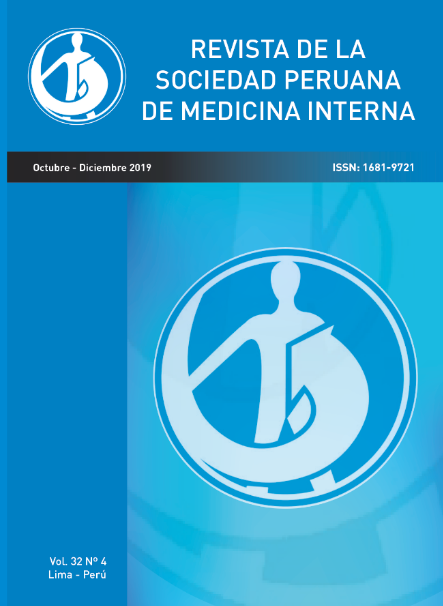Diagnosis and classification of knee osteoarthritis through two different radiographic techniques: reproducibility and concordance level for diagnosis and radiological classification
DOI:
https://doi.org/10.36393/spmi.v32i4.491Keywords:
Osteoarthritis, conventional radiography, fixed flexion radiographyAbstract
Anteroposterior knee (AP) radiography is routinely used for the diagnosis of osteoarthritis (OA). However, there are more sophisticated techniques such as acquisition in fixed knee flexion (FF) but they require special attachments, fluoroscopy and trained personnel, elements that are not available to all health centers.
The objective of this study was to compare the reproducibility and the level of concordance or discordance of both techniques among rheumatologists for the diagnosis and initial classification of OA according to the method of Kellgren & Lawrence (K&L).
Material and methods: Three researchers evaluated the reproducibility of both techniques in assessing the thickness of the joint space with a millimeter magnifying glass on bilateral radiographs. To assess intraobserver and interobserver variation, each researcher performed 30 measurements blindly for each radiograph (10 pairs of radiographs, in total 600 measurements per evaluator).
The concordance or discordance in the diagnosis and classification of the degree of OA (K&L) among rheumatologists was evaluated in 10 radiographs with the AP technique and 10 with the FF, which were interpreted by six rheumatologists in a blind and randomized manner (total 240 readings). The intraclass correlation coefficient (ICC) was used to evaluate the inter-evaluation and intra-evaluation reliability and the concordance or discordance was assessed using the Cohen kappa statistical test.
Results: Intravaluation ICC values were 0.9528, 0.8246, 0.9545 and 0.8862 for the left and right APRs and the left and right FF respectively. For the CCI interevaluadores these same values were: 0.946, 0.9866, 0.9446 and 0.9934 respectively. No significant difference (p>0,005) was found in the interobserver and intraobserver ICC values, with neither of these techniques and both were similarly reproducible.
The Kappa index value for the degree of concordance in the interpretation of the radiological stages among the readers for the AP technique was 0.50 (moderate concordance); and of 0.32 for the FF technique (acceptable agreement). No significant difference was found with either of the two techniques in the concordance and discordance among the readers (p>0,05).
Conclusion: With both techniques (AP and FF), reliable and reproducible measurements were obtained in the timely measurement of joint space and in the classification of the K&L; and, for the punctual diagnosis and the initial classification of K&L both techniques were similar.















